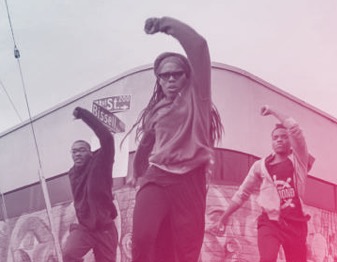There is a sub-genre of memoir that I never really get tired of. And judging by the publishing trends of the last decade or so, I must not be alone. It’s not the addiction autobiography — those get repetitive and boring. It’s the “my childhood with crazy parents” narrative that gets me every time. NPR reporter Jacki Lyden’s Daughter Of The Queen Of Sheba was probably the first that I read. Clane Hayward’s The Hypocrisy of Disco, previously reviewed, is still one of my favorite books from the past year. Criminal Of Poverty by Lisa “Tiny” Gray-Garcia focuses less on her mother’s mental illness and more on the prison-industrial complex that kept them in a never-ending downward spiral with no one to turn to for help. I haven’t yet read Virginia Holman’s Rescuing Patty Hearst: Memories From a Decade Gone Mad or Jeannette Walls’s The Glass Castle, but I’m sure I’d devour those in one sitting, too. Each family is, like Tolstoy’s dictum, unhappy in its own way. Even if your family was normal, you can find something to pull you in. Just like the way a kid from the 20th century suburbs could read a fairy tale like Rapunzel and kind of wish she was an orphan imprisoned in a tower by a witch.
Laura Flynn, author of Swallow The Ocean, was obsessed with the Rapunzel legend for a different reason. For several years, Laura and her sisters were virtual hostages to their mother’s schizophrenia. They would braid together their dolls’ hair and concoct escape fantasies, hoping for their own rescue.
Flynn is a native San Franciscan. Born the summer before the Summer Of Love, she’s a near-exact contemporary of Hypocrisy of Disco author Clane Hayward. But aside from a San Francisco birth, and complicated parental relationships, the similarities end there. Flynn’s childhood in the fog-encapsulated Richmond district was a universe away from the goings-on over in the Haight. Flynn paints a vivid portrait of her block’s most feared kids, the nine Mulligan brothers, “an endless horde of Patricks, Eddies, and Bobs in toughskin jeans and beefy tees.” Laura and her sisters get “drafted” by the Mulligans into a war against the Kittredge family. The Kittredge kids, dirty, lost, and motherless, are “hippies” worthy of scorn. You get a sense that “hippie” was the worst slur an Irish-American Richmond District kid of 1972 could think of.
As the years went on, Laura, Sara, and Amy Flynn came to have more in common with the shunned and lonely Kittredges than they could have ever guessed. Their mother, Sally, developed a particularly 1970’s brand of madness. Her delusions and paranoias involved Edgar Cayce, the Del Monte corporation, Richard Nixon, Jesus, Buddha, and her “special partner” in the fight against evil, John F. Kennedy. In one heartbreaking passage, Sally explains that she watches the Lawrence Welk show with her eyes fixed on one little girl in the chorus who resembles Laura. The more people from the “good side” have their eyes on the ersatz Laura, the better chance that the real Laura will escape the devils who control the world and the weather. Somewhere under the madness is an expression of real love.
Rescuing Patty Hearst author Virginia Holman spent three years kidnapped by her mother, sequestered in a vacation cabin with blackened windows, fighting a “secret war.” For her own survival, Holman decided to believe that the secret war was real. Sally Flynn, in contrast, didn’t actively pull her children into her delusional world in that way — instead, she pushed them out. Laura Flynn often describes her mother as absent, or behind a closed door. When necessary, she could usually summon up the sanity to keep social workers and nosy neighbors at bay. The kids kept attending school and visiting their father on weekends. Amazingly, Sally Flynn even continued to more or less successfully manage the apartment building they owned and lived in. Meanwhile, old newspapers piled up inside, in stacks along the walls, two and three feet high.


